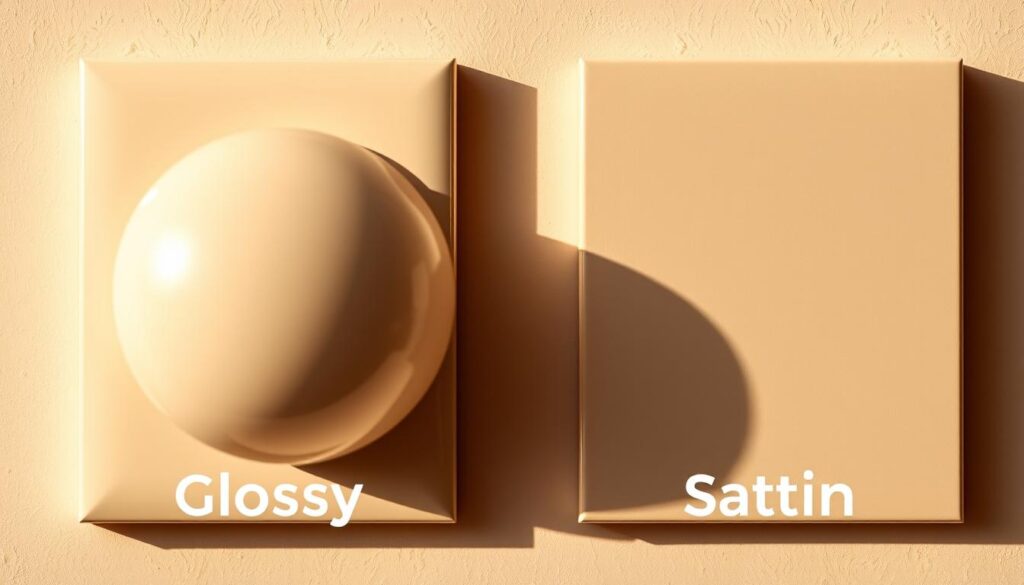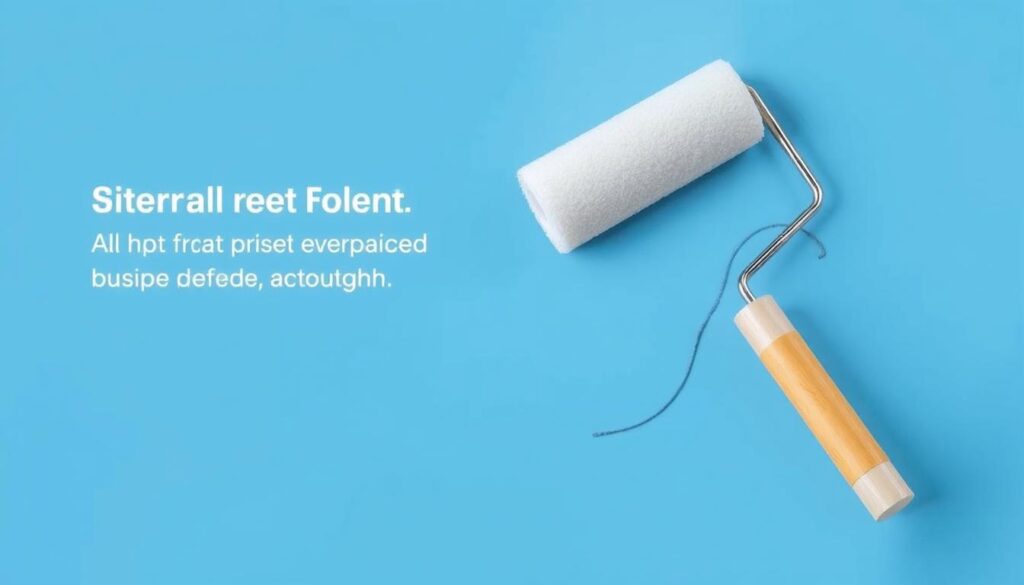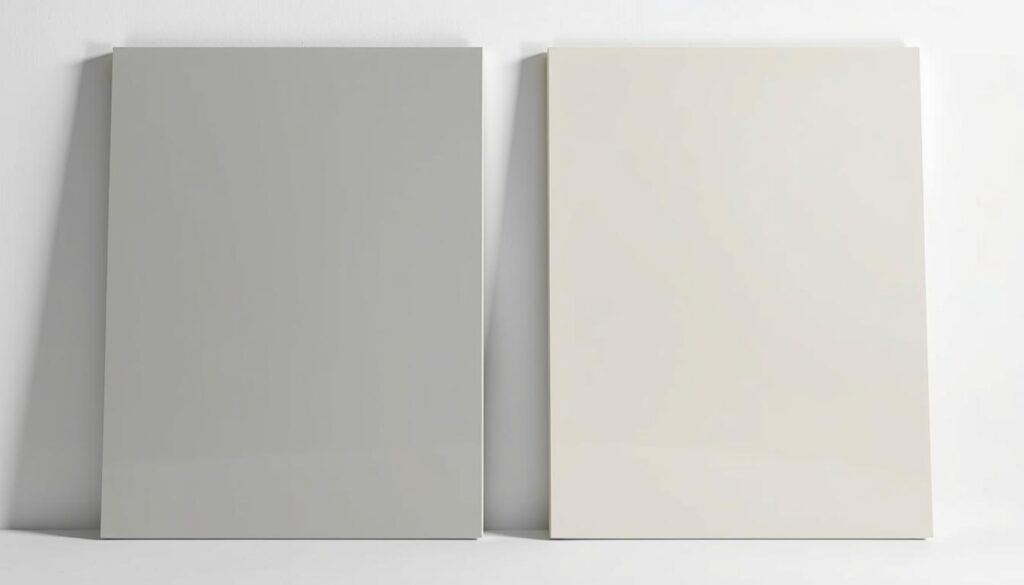Are you struggling to decide on the perfect paint finish for your home improvement project? Choosing between gloss and satin finishes can be daunting, but making the right choice is crucial for both aesthetics and durability.
Selecting the ideal paint finish can significantly impact the overall look and feel of your space. With various finishes available, understanding their unique strengths and applications is vital.
This article will guide you through the key differences between gloss and satin paint, helping you make an informed decision that suits your needs.
Key Takeaways
- Understand the differences between gloss and satin paint finishes.
- Learn about the ideal applications for each finish.
- Discover how paint sheen affects the overall look and performance.
- Make an informed decision based on practical considerations.
- Explore the comprehensive comparison of appearance, durability, and maintenance.
Understanding Paint Finishes: Gloss vs Satin
Choosing the right paint finish is crucial, and understanding the differences between gloss and satin is a good place to start. When you’re deciding on a paint finish, you’re not just picking a colour; you’re also selecting how that colour will look in terms of shine and durability.
What Is Sheen and Why It Matters
Sheen refers to the level of shine or gloss that a paint finish exhibits. It’s an important consideration because it affects not only the appearance but also the durability of the paint. Different sheen levels are achieved through varying amounts of binder and pigment in the paint formulation. A higher sheen typically means a more durable finish, but it can also highlight surface imperfections.
The Spectrum of Paint Finishes
Paint finishes range from flat (or matt) to high gloss, with satin and eggshell falling somewhere in between. To understand where gloss and satin sit on this spectrum, consider the following table:
| Finish | Sheen Level | Typical Use |
|---|---|---|
| Flat/Matt | Low | Ceilings, low-traffic areas |
| Eggshell | Low-Medium | Living rooms, bedrooms |
| Satin | Medium | Trim, doors, high-traffic areas |
| Semi-Gloss | High | Windows, doors, trim |
| High Gloss | Very High | High-impact areas, furniture |
Understanding the spectrum of paint finishes helps you choose the right sheen for your project, ensuring both aesthetic appeal and durability.
Key Gloss vs Satin Paint Differences
The distinction between gloss and satin paint lies in their unique properties, which impact the appearance and durability of the painted surface. Understanding these differences is vital for selecting the most appropriate finish for your painting project.
Appearance and Light Reflection
Gloss paint is known for its high sheen level, reflecting a significant amount of light and making it ideal for surfaces that need to stand out. In contrast, satin paint offers a softer, more subtle appearance with less light reflection, making it suitable for areas where a less conspicuous finish is desired.

Durability and Resistance
In terms of durability, both finishes have their strengths. Gloss paint is generally more resistant to wear and tear, as well as moisture, making it a good choice for areas like kitchens and bathrooms. Satin paint, while still durable, is more prone to marks and scuffs but remains a popular choice for its balance between appearance and resilience.
Application and Coverage
The application process differs between the two paints. Gloss paint requires a smooth, even surface to prevent highlighting imperfections. Satin paint, on the other hand, is more forgiving and can cover minor imperfections more effectively. However, uneven application can lead to noticeable differences in finish.
Satin Paint: Features and Benefits
With its soft sheen and robust performance, satin paint is a versatile choice for various rooms. You can rely on satin paint to provide a durable finish that withstands the wear and tear of daily life.
Characteristics of Satin Finish
Satin paint is known for its moderate sheen level, which is more than matte but less than gloss. This characteristic makes it suitable for a wide range of applications, from trim work to entire walls. The satin finish is achieved through a specific formulation that balances light reflection and surface imperfections.
Advantages of Choosing Satin Paint
One of the main advantages of satin paint is its durable surface. It resists scuffs and marks better than flat or matte finishes, making it ideal for high-traffic areas. Additionally, satin paint is relatively easy to clean, which is a significant benefit for rooms like kitchens and bathrooms.
Limitations to Consider
While satin paint has many benefits, it’s not without its limitations. For instance, it may not completely hide deep surface imperfections. Moreover, touch-ups can be challenging as they may not blend seamlessly with the surrounding area. It’s also worth noting that satin paint is not as stain- or moisture-resistant as higher-sheen options.
- Satin paint may not hide deep dents or significant surface damage.
- Touch-ups can be tricky and may remain visible.
- It offers less protection against stains and moisture compared to higher-sheen paints.
Gloss Paint: Features and Benefits
If you’re looking for a paint finish that makes a statement, gloss paint is definitely worth considering. With its highly reflective surface, gloss paint can add a touch of elegance to any room.

Characteristics of Gloss Finish
A gloss finish is known for its high sheen level, which can range from high gloss to semi-gloss. This type of finish is often used on trim, doors, and windows to create a sleek, modern look. The high reflectivity of gloss paint can also help to make a room appear brighter.
Advantages of Choosing Gloss Paint
One of the main advantages of gloss paint is its durability. It is highly resistant to wear and tear, making it perfect for high-traffic areas. Additionally, gloss paint is easy to clean and maintain, as it can be wiped down with a damp cloth. For more information on the benefits of different paint finishes, you can visit this page.
Limitations to Consider
While gloss paint has many benefits, it also has some limitations. One of the main challenges is that it can highlight imperfections on the surface, requiring extensive preparation before application. Furthermore, gloss paint can be too distracting when used in large areas, potentially overwhelming the intended design scheme. It’s also worth noting that gloss paint colours can appear to shift or change under different lighting conditions due to their reflective properties.
Where to Use Each Finish in Your Home
To achieve the desired look in your home, it’s essential to know the best applications for satin and gloss paint finishes. Both offer unique benefits, and understanding where to use them can significantly enhance your home’s interior.
Best Rooms and Surfaces for Satin Paint
Satin paint is ideal for living areas, bedrooms, and dining rooms due to its subtle sheen and durability. It’s particularly suitable for walls and ceilings as it provides a soft, warm glow.
Best Rooms and Surfaces for Gloss Paint
Gloss paint is best used in high-traffic areas and on surfaces that require frequent cleaning, such as kitchens and bathrooms. It’s also perfect for trim, skirting boards, and doors due to its high durability and moisture resistance.
Creative Ways to Combine Both Finishes
You can combine satin and gloss paint to create a visually appealing contrast. For example, using gloss paint on trim and skirting boards with satin paint on walls can add depth to a room. You can also use high gloss paint to create subtle patterns over a satin base coat, adding a creative touch to your walls or furniture.
| Feature | Satin Paint | Gloss Paint |
|---|---|---|
| Best Use | Walls, ceilings, living areas | Trim, skirting boards, high-traffic areas |
| Durability | High | Very High |
| Sheen Level | Moderate | High |
By understanding the strengths of each finish and how to combine them creatively, you can achieve a sophisticated and visually interesting interior design.
Painting Tools and Application Tips

When it comes to achieving a flawless finish with gloss or satin paint, the right tools and techniques are crucial. The choice of brushes and rollers can significantly impact the final result.
Brushes and Rollers for Different Finishes
For water-based gloss and satin paints, foam paint rollers are an excellent choice. They provide a smooth finish and are easy to use. A set that includes multiple rollers, a roller frame, and tray can be particularly useful.
The type of roller used can affect the finish; for instance, high-density foam rollers are ideal for achieving a smooth finish with water-based paints.
Application Techniques for Professional Results
To achieve professional results, it’s essential to master the application techniques for both gloss and satin paints. This includes understanding the correct brush stroke direction and pressure to apply.
Proper surface preparation is also vital; ensuring the surface is clean and dry will help achieve an optimal finish. Additionally, being mindful of environmental conditions such as temperature and humidity can impact the final result.
Conclusion: Making Your Final Decision
To make an informed decision between gloss and satin paint, weigh the unique strengths and weaknesses of each finish. Consider the specific needs of your project and how they align with the characteristics of each paint type. If durability and ease of cleaning are paramount, gloss paint may be the better choice. Conversely, if you’re seeking a soft, muted look that hides imperfections, satin paint could be more suitable.
Ultimately, the right choice depends on your personal preferences, the specific area of your home being painted, and the level of shine you desire. You may even consider combining both finishes strategically throughout your home to maximize their benefits. Test sample pots in your space before committing to a specific paint.
## FAQ
### Q: What is the main difference between satin and gloss finishes?
A: The primary difference lies in their level of sheen, with satin having a softer, more subtle shine and gloss being highly reflective. This affects their appearance, durability, and suitability for different areas of your home.
### Q: Which finish is more suitable for high-traffic areas, such as hallways and kitchens?
A: Satin finish is often preferred for high-traffic areas due to its durability and ease of cleaning. It provides a good balance between aesthetics and practicality, making it ideal for busy spaces.
### Q: Can I use gloss paint on walls, or is it better suited for trim and skirting boards?
A: While gloss paint can be used on walls, it’s typically more suited for trim, skirting boards, and doors due to its high sheen and durability. For walls, a satin or eggshell finish is often a more popular choice as it provides a softer appearance.
### Q: How do I choose between satin and gloss for woodwork?
A: For woodwork, consider the level of durability and shine you desire. Gloss paint is highly reflective and durable, making it a good choice for areas that need frequent cleaning. Satin finish offers a more subtle look and is still relatively easy to clean.
### Q: Are there any specific application techniques I should follow for a professional finish?
A: Yes, using the right brushes or rollers for your chosen finish is crucial. For a smooth finish, apply paint in thin, even coats, allowing each coat to dry according to the manufacturer’s instructions.
### Q: How does the sheen level affect the appearance of imperfections on the surface?
A: Higher sheen levels, like gloss, tend to highlight surface imperfections, whereas lower sheen levels, such as satin, can help mask them. Therefore, satin might be a better choice if your surface has imperfections.
### Q: Can I mix different finishes, like using satin on walls and gloss on doors?
A: Yes, mixing finishes is a great way to add visual interest to your home. Using satin on walls and gloss on doors and trim can create a nice contrast and highlight architectural features.



